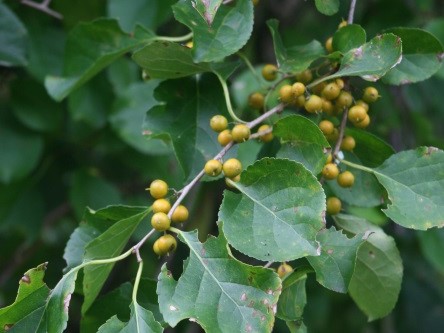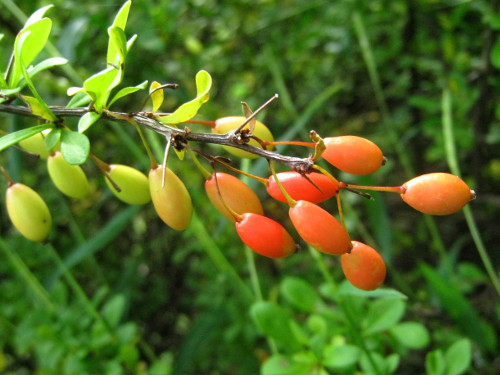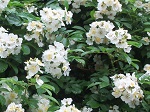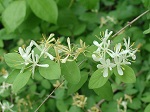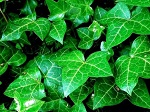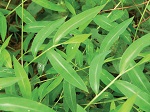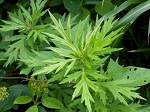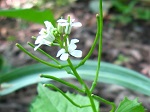Hudson Valley Native Landscaping offers the best and most efficient invasive plant removal anywhere. With 10 years of hands on experience dealing with these nuisance plants we are the experts. We will reclaim any size property.
This is a list of the 10 most invasive plants that you are likely to find in and around your Hudson Valley yard.
1. (alias Vitis Spp): Grape vine’s knobby, flaky vines don’t hug a tree like Poison Ivy does. They hang away from the trunk and pull down the branches of the tree as it reaches skyward. Up at the top of the tree it uses its long, spiral tendrils to hang onto leaves and branches. This is where Grape flourishes, growing much faster than the tree itself, stealing the sunlight and weighing down the branches ...
2. (alias Celastrus orbiculatus): Oriental Bittersweet and Wisteria have similar characteristics. Bittersweet has berries and rounded oblong, serrated leaves, while Wisteria has pointed, ruffled, serrated leaves. They both spiral up the trees and tighten around the trunk like a tourniquet, cutting off the flow of nutrients and strangling the tree. Oriental bittersweet reproduces by seed and rhizome. The seeds are ...
3. (alias Wisteria sinensis): There are actually two types of Wisteria; Chinese Wisteria (Wisteria sinensis) and Japanese Wisteria (Wisteria foribunda). An interesting fact is that Chinese Wisteria twists clockwise around objects in its path, while Japanese Wisteria twists counterclockwise. It doesn’t really matter, they are both dangerous and strangle your trees, and spread rapidly with its long runners and countless seeds ...
4. (alias Berberis thunbergii DC): Barberry is a dense, round, thorny shrub that grows 2 to 6 ft. high. In early April to May, tiny pale yellow flowers hang in clusters along the length of the stem. Many nurseries still sell it for its autumn shades of red, orange and purple, and its bright red winter berries. In addition to harboring ticks, it’s the first to leaf out in the spring, beating all the native understory to the first sunlight of
5. (alias Rosa Multiflora): Wild Rose has thorny canes that arch out from the plant and produces roots to send up new shoots when they come in contact with soil. In this way it escapes captivity simply by “walking” across a field or woods. If Multiflora Rose is under a tree, new canes rise from the older ones and climb sometimes 40 ft up a tree, reaching for sunlight, and pulling the top down with the weight. Rose steals sunlight from the ...
6. (alias Lonicera morrowii): The Hudson Valley is home to both native and non-native species of Honeysuckle. They both appear very similar. You can distinguish between them by looking at the stems. Native honeysuckles have solid stems while invasive honeysuckles have hollow stems. You will rarely see a native honeysuckle though because they have been almost completely wiped out by the alien species ...
7. (alias Hedera helix): English ivy’s evergreen leaves provide great ground cover that requires no maintenance, but if left unchecked will spread to the neighbor’s yard or the forest. When it climbs up trees, it eats away at the bark just as it does the bricks of your house. English Ivy is very common in yards and if left unchecked, will spread rapidly and smother other native forest plants by denying them sunlight and ground resources ...
8. (alias Microstegium vimineum): Japanese Stiltgrass found its way into the United States in the early 1900’s and is currently wreaking havoc from New York to Florida. Stiltgrass can be found in back yards, stream banks, floodplains, moist woodlands, and roadsides. It favors soils that are acidic or neutral and grows well in many light conditions. Once Stiltgrass gets a foothold, it quickly becomes a ...
9. (alias Microstegium vimineum): Japanese Stiltgrass found its way into the United States in the early 1900’s and is currently wreaking havoc from New York to Florida. Stiltgrass can be found in back yards, stream banks, floodplains, moist woodlands, and roadsides. It favors soils that are acidic or neutral and grows well in many light conditions. Once Stiltgrass gets a foothold, it quickly becomes a ...
10. (alias Alliaria petiolata): OK, so there’s 11. Stiltgrass moved up in the ranks and pushed Garlic Mustard out of the 10 Most Wanted List. Garlic Mustard is still very pervasive and like Mugwort is probably in your yard right now, so we’re still including it here. Garlic Mustard takes two years to fully mature and produce seeds. Seeds germinate in February to early March and grow into a short rosette ...
Of course, we come across more than 10 invasive species on a regular basis. Here is a brief list of some other invasive plants we have brought to justice.

